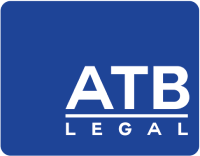Introduction
In a significant step toward strengthening international tax cooperation, the UAE Ministry of Finance (MoF), in coordination with the Federal Tax Authority (FTA), has issued comprehensive guidance on the Mutual Agreement Procedure (MAP). This long-anticipated update provides much-needed clarity on the procedures available to resolve cross-border tax disputes under the UAE’s Double Taxation Agreements (DTAs).
For businesses with international operations—and especially those exposed to transfer pricing risks, permanent establishment claims, or tax assessments in more than one jurisdiction—this development is both timely and consequential.
A Formal Pathway to Resolve Cross-Border Tax Disputes
The Mutual Agreement Procedure is a treaty-based mechanism that allows taxpayers to request assistance from competent authorities (in the UAE, the MoF) to resolve cases of double taxation or inconsistent tax treatment arising under DTAs.
Under the newly issued guidance, taxpayers can formally initiate the MAP process in situations where:
- The terms of a DTA have not been correctly applied,
- Economic double taxation has occurred (e.g., due to transfer pricing adjustments),
- There is uncertainty over the allocation of taxing rights between jurisdictions.
The guidance reinforces the UAE’s commitment to aligning with OECD standards and ensures that businesses can access internationally recognized channels for dispute resolution—without the need to resort solely to domestic litigation or appeals.
This blog is a part of our Tax Advisory Services.
Key Features of the MAP Guidance
Filing Window and Eligibility
Taxpayers must file a MAP request within three years from the date they first become aware of the action giving rise to potential double taxation. The application must be filed with the UAE’s Competent Authority at the Ministry of Finance.
As per the guidance, a taxpayer may submit a Mutual Agreement Procedure (MAP) request to the UAE Competent Authority while domestic remedies remain available, to preserve their right under the applicable tax treaty; however, the taxpayer must suspend domestic legal proceedings during the MAP process. If the MAP outcome is accepted, the taxpayer must formally withdraw and forgo any related domestic claims; if rejected, domestic remedies may still be pursued.
It should be noted that the role of the UAE Competent Authority, under the MAP provisions of the DTA, is to endeavor to eliminate double taxation and not to re-audit the taxpayer.
Documentation and Procedural Requirements
The MAP request must be accompanied by:
- A detailed factual and legal summary of the issue,
- Copies of tax assessments, audit findings, and DTA provisions invoked,
- Supporting documentation for transfer pricing positions or permanent establishment claims (where applicable).
The process is bilateral in nature—meaning the MoF will engage with the counterpart tax authority to seek a resolution that prevents or eliminates double taxation. The guidance emphasizes the need for good faith cooperation by the taxpayer throughout the process.
Timeline and Resolution Expectations
Although no strict deadline is imposed for resolution, the UAE has affirmed its intent to adhere to OECD best practice timelines(Article 25 of the OECD Model tax Convention ‘MTC’), which may be depended on complexity and the position of the other tax authority involved.
Why This Matters: Practical Implications for UAE Businesses
For companies engaged in cross-border trade, intra-group transactions, or operating through multiple jurisdictions, the issuance of this guidance delivers several strategic benefits:
Certainty and Predictability: MAP offers a structured process to resolve tax conflicts that may otherwise create financial uncertainty or double taxation risk.
Protection from Arbitrary Adjustments: Where transfer pricing audits or permanent establishment allegations arise, MAP can help restore balance and legal consistency across jurisdictions.
Enhanced Treaty Reliability: The availability of MAP strengthens confidence in the UAE’s network of over 100+ Double Taxation Agreements, reaffirming the UAE’s credibility as a treaty-compliant jurisdiction.
Alignment with Global Norms: In line with the OECD’s Base Erosion and Profit Shifting (BEPS) framework, the MAP guidance positions the UAE alongside leading jurisdictions in tax governance and dispute resolution.
Next Steps for Businesses
Businesses should now take practical steps to assess their readiness to invoke MAP, where needed. Recommended actions include:
Reviewing historical and ongoing cross-border transactions to identify exposure points that could lead to double taxation.
Documenting intercompany arrangements—particularly in relation to transfer pricing policies, economic substance, and permanent establishment considerations.
Building internal awareness of MAP eligibility and procedures, especially within tax, legal, and finance functions.
Where potential disputes or inconsistencies arise, early engagement with the MoF and preparation of a properly structured MAP request will be key to successful resolution.
Conclusion
The issuance of the MAP guidance by the UAE Ministry of Finance and the Federal Tax Authority marks a pivotal development in the country’s international tax framework. It provides multinational businesses operating in the UAE with an effective legal mechanism to navigate cross-border tax conflicts—rooted in treaty law, backed by procedural transparency, and aligned with international standards.
For corporate taxpayers, this is more than a procedural update—it is a call to ensure that global tax strategies are not only compliant but also supported by the safeguards offered through MAP.
